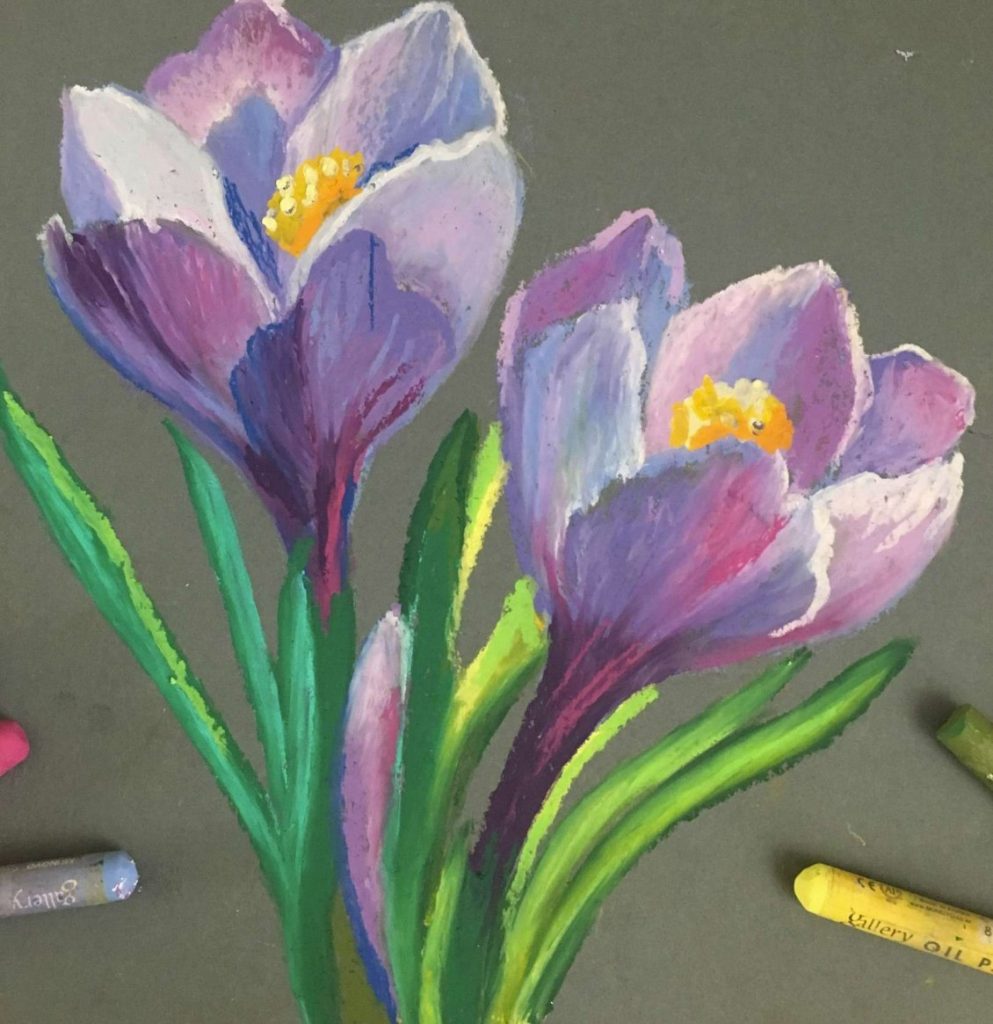Soft and oil pastels, though grouped under the same umbrella term, offer distinct artistic experiences. While both create vibrant artwork, their composition, application, and effects differ significantly. Let’s delve into the key characteristics of these two mediums to understand their unique potential.
Part 1: Composition and Application

Soft Pastels: The Blend Masters
Soft pastels, consisting of pure pigment combined with a minimal amount of binder such as gum arabic or methylcellulose, are renowned for their dry and powdery texture, akin to that of chalk. This unique composition allows for exceptional blending capabilities, enabling artists to achieve seamless transitions, soft washes of color, and a velvety texture in their artwork. The minimal binder content provides artists with the freedom to effortlessly blend and layer colors, allowing for the creation of gentle gradients and subtle tonal variations within their compositions. This makes soft pastels particularly well-suited for artists who seek to evoke hazy and dreamlike atmospheres or those who aim to render detailed portraits with intricate and nuanced shading. The medium’s characteristic texture empowers artists to capture the softness of light and form, making soft pastels a favored choice for creating evocative and visually captivating artworks filled with depth and emotion.
Oil Pastels: The Vibrant Layers
In contrast to soft pastels, oil pastels are composed of pigment combined with oil and wax binders. This results in a smoother and creamier texture. This unique composition gives oil pastels a distinct feel. It offers a more vibrant color saturation and a more opaque application compared to soft pastels. The presence of the oil binder in oil pastels allows for the creation of vibrant and intense colors that can be applied in a more solid and opaque manner. This adds a rich and luxurious quality to the artwork. Unlike the seamless blending achievable with soft pastels, oil pastels create distinct layers when applied. It enables artists to build up rich color saturation and texture within their compositions. The ability to create and preserve distinct layers of color and texture gives oil pastels a unique advantage.

Part 2: Techniques and Effects
Soft Pastels: Blending and Smudging
The powdery nature of soft pastels lends itself perfectly to blending and smudging techniques. Artists have the flexibility to use their fingers, blending stumps (tortillons), or even brushes to achieve seamless transitions between colors with soft pastels. This versatility in blending techniques allows for the creation of soft gradients, ethereal backgrounds, and photorealistic effects through meticulous and controlled blending. By leveraging the powdery composition of soft pastels, artists can infuse their artwork with a sense of depth and atmosphere. They can also achieve a high level of detail and realism. Whether it’s capturing the subtle shifts in light, blending colors to create atmospheric effects, or achieving smooth transitions in a portrait, the blending capabilities of soft pastels provide artists with a broad range of creative opportunities to explore and express their artistic vision. The medium’s ease of blending makes it well-suited for creating artworks with a delicate and nuanced appearance.
Oil Pastels: Layering and Impasto
Oil pastels excel in creating bold, layered effects. Since the oil binder prevents them from drying completely, subsequent layers can be applied and blended to a certain extent. This allows for a more painterly approach, where artists can build up texture and create a sense of impasto (thick application of paint creating a raised surface). Additionally, the waxy texture allows for scratching techniques to reveal underlying colors, adding depth and detail.

Part 3: Application Surfaces and Fixatives
Soft Pastels: Textured Surfaces are Key
Soft pastels are known for their powdery texture, which requires a textured surface to adhere effectively. This is why pastel paper with a slight tooth, or surface texture, is considered ideal for creating pastel artworks. The texture allows the pigment particles to become lodged within the fibers, ensuring better adhesion and color saturation. However, artists can also use smoother surfaces like illustration board, but they might need to fix the pastels with a spray fixative more frequently to prevent smudging, due to the lack of texture to hold the pigments in place. Ultimately, the choice of surface texture depends on the desired artistic effect and how often the artist is willing to apply fixatives to protect their work. These considerations are important for achieving the desired results when working with soft pastels and ensuring the longevity of the artwork.
Oil Pastels: More Surface Versatility
The oil and wax binders in oil pastels make them more versatile regarding application surfaces. They adhere well to traditional pastel paper, but can also be used on canvas, wood, and even metal or glass. The slightly greasy texture might not be suitable for all surfaces, so some experimentation might be necessary. However, this versatility allows artists to explore mixed-media techniques by combining oil pastels with other mediums like acrylics.

Part 4: Preservation and Care
Soft Pastels: Delicate Beauty Needs Protection
Soft pastels, with their loose and powdery consistency, are particularly susceptible to smudging and dust damage. The pigment particles are not firmly bound together. To safeguard the integrity of soft pastel artworks, artists should employ protective measures. This includes using a fixative spray after completing their piece.
A fixative spray helps set pastel layers in place. It prevents smudging and preserves delicate colors and textures. When framing, a glass cover adds protection against dust and environmental factors. This barrier shields the artwork from physical damage. It also maintains the vibrancy and longevity of the pastel colors. By taking these precautions, artists can ensure their soft pastel creations remain well-preserved and visually stunning.
Oil Pastels: Relatively Durable, But Care is Advised

Oil pastels are generally more durable than soft pastels due to the oil binder. However, they can still be susceptible to scratches and smudging. While fixatives are not strictly necessary for oil pastel artwork, they can be used for additional protection, especially for pieces that will be frequently handled.
In conclusion, both soft and oil pastels offer unique artistic possibilities. Soft pastels, with their emphasis on blending and subtle hues, are ideal for creating dreamlike landscapes and detailed portraits. Oil pastels, with their vibrant colors and layering capabilities, are perfect for bold, expressive artwork and mixed-media pieces. By understanding the composition, application techniques, and ideal surfaces for each medium, artists can unlock their full potential and create captivating works of art.





